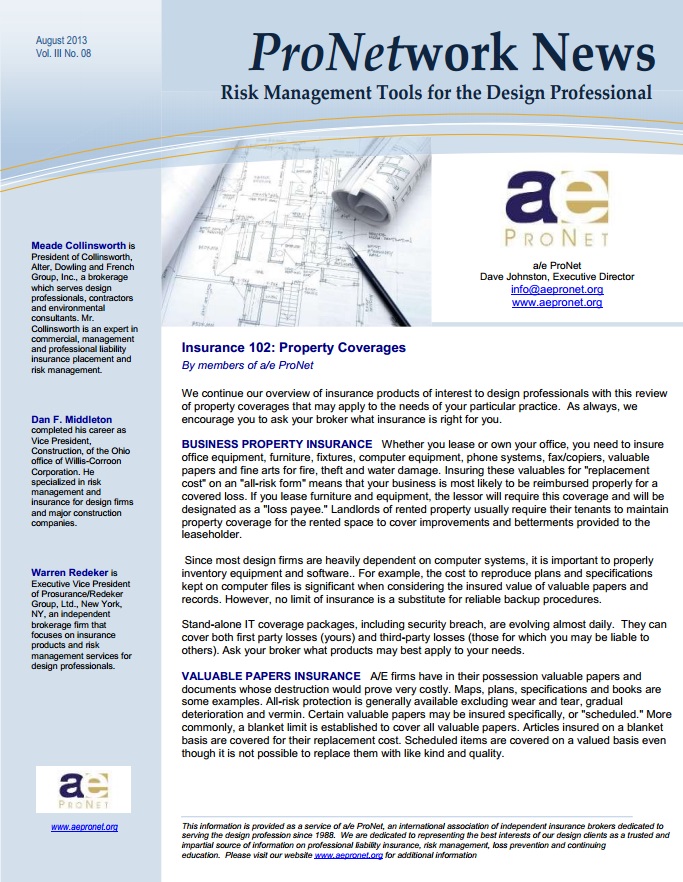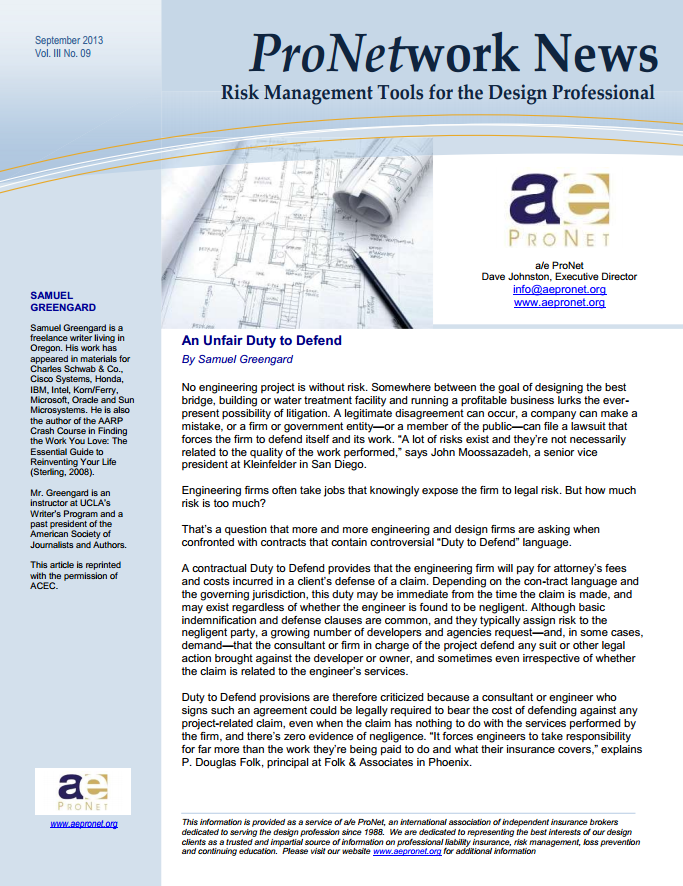 This issue of ProNetwork News is meant to serve as a basic reference guide to the property insurance coverages typically purchased by design firms. Last month we posted a companion piece, Insurance 101: The Things You Always Wanted to Know About Liability Coverage But Were Afraid to Ask.
This issue of ProNetwork News is meant to serve as a basic reference guide to the property insurance coverages typically purchased by design firms. Last month we posted a companion piece, Insurance 101: The Things You Always Wanted to Know About Liability Coverage But Were Afraid to Ask.
We continue our overview of insurance products of interest to design professionals with this review of property coverages that may apply to the needs of your particular practice. As always, we encourage you to ask your broker what insurance is right for you.
BUSINESS PROPERTY INSURANCE
Whether you lease or own your office, you need to insure office equipment, furniture, fixtures, computer equipment, phone systems, fax/copiers, valuable papers and fine arts for fire, theft and water damage. Insuring these valuables for “replacement cost” on an “all-risk form” means that your business is most likely to be reimbursed properly for a covered loss. If you lease furniture and equipment, the lessor will require this coverage and will be designated as a “loss payee.” Landlords of rented property usually require their tenants to maintain property coverage for the rented space to cover improvements and betterments provided to the leaseholder.
Since most design firms are heavily dependent on computer systems, it is important to properly inventory equipment and software.. For example, the cost to reproduce plans and specifications kept on computer files is significant when considering the insured value of valuable papers and records. However, no limit of insurance is a substitute for reliable backup procedures.
Stand-alone IT coverage packages, including security breach, are evolving almost daily. They can cover both first party losses (yours) and third-party losses (those for which you may be liable to others). Ask your broker what products may best apply to your needs.
VALUABLE PAPERS INSURANCE
A/E firms have in their possession valuable papers and documents whose destruction would prove very costly. Maps, plans, specifications and books are some examples. All-risk protection is generally available excluding wear and tear, gradual deterioration and vermin. Certain valuable papers may be insured specifically, or “scheduled.” More commonly, a blanket limit is established to cover all valuable papers. Articles insured on a blanket basis are covered for their replacement cost. Scheduled items are covered on a valued basis even though it is not possible to replace them with like kind and quality. Continue reading “Insurance 102: Property Coverages for Architects & Engineers”








